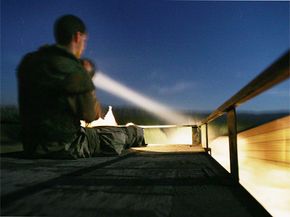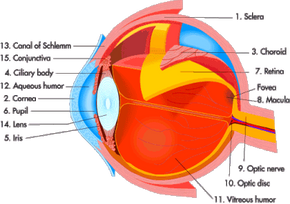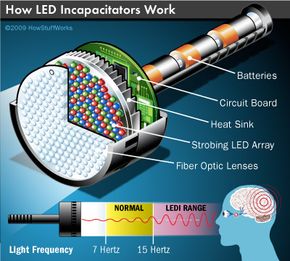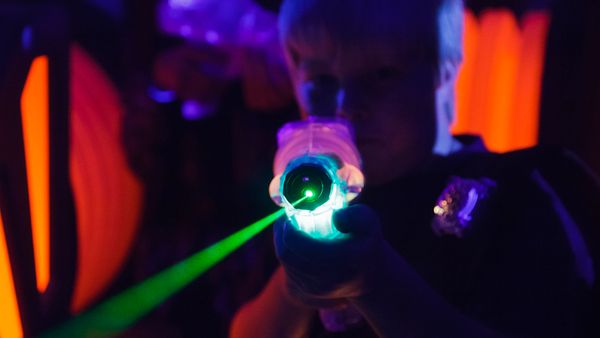Key Takeaways
- The LED Incapacitator is a nonlethal weapon designed to temporarily stun targets using high-intensity flashing lights.
- It uses rapidly changing patterns of light that overwhelm the brain, causing disorientation and nausea.
- While touted as a safer alternative to traditional weapons, the LED Incapacitator raises ethical concerns regarding its potential for misuse and long-term health effects.
A law enforcement officer stands at a border crossing. The officer has to apprehend a suspect in a vehicle without shooting him. The officer just needs to disorient the suspect long enough to control him. What are the officer's options?
He could use a stun gun or a Taser, but that assumes he's within arm's reach of the suspect. He's not. Plus, a Taser can induce a heart attack in certain suspects.
Advertisement
What about shining a laser into the vehicle and distracting the suspect? Lasers can act over a distance. In fact, people have used this technique illegally to distract airplane pilots during takeoff and landing, and the U.S. military has employed this method in Iraq when inspecting vehicles with suspected terrorists [source: FoxNews.com]. However, lasers can also damage a suspect's eyes, possibly leading to blindness.
The officer's best option may be a strobe light. The rapid, bright flashes from the strobe overload the suspect's visual system and temporarily disorient him. It's called strobing, although you probably won't find that verb in the dictionary yet.
Scientists at Intelligent Optical Systems in Torrance, Calif., have developed a rapid, strobe system that not only distracts the suspect, but also makes him rapidly nauseous, if not violently ill. Called an LED Incapacitator (LEDI), the device relies on light-emitting diodes. The U.S. Department of Homeland Security awarded the company a $1 million grant to develop and test its nonlethal weapon.
Intelligent Optical Systems doesn't have a lock on the market. Several similar nonlethal devices exist, such as the Active Denial System (ADS), which uses microwave radiation. The ADS emits millimeter waves that heat up water in the skin's outer layers and cause a burning sensation. The idea is that the millimeter waves don't penetrate far into the skin, so no permanent damage results. The rather large ADS is mounted on a truck. It's effective for controlling large crowds, but it would be tough for a single officer or soldier to wield.
The Personnel Halting and Stimulation Response (PHaSR) uses two low-power diode lasers to distract the suspect without blinding him. Although the PHaSR can act from a distance, it's not as small or portable as the LEDI, and it sucks up more power. Both the PHaSR and the LEDI are still in the development and testing phases. Neither weapon has been issued to soldiers or law enforcement or is available to the public.
Up next, we'll see why the small, portable LEDI makes you want to hurl.
Advertisement




